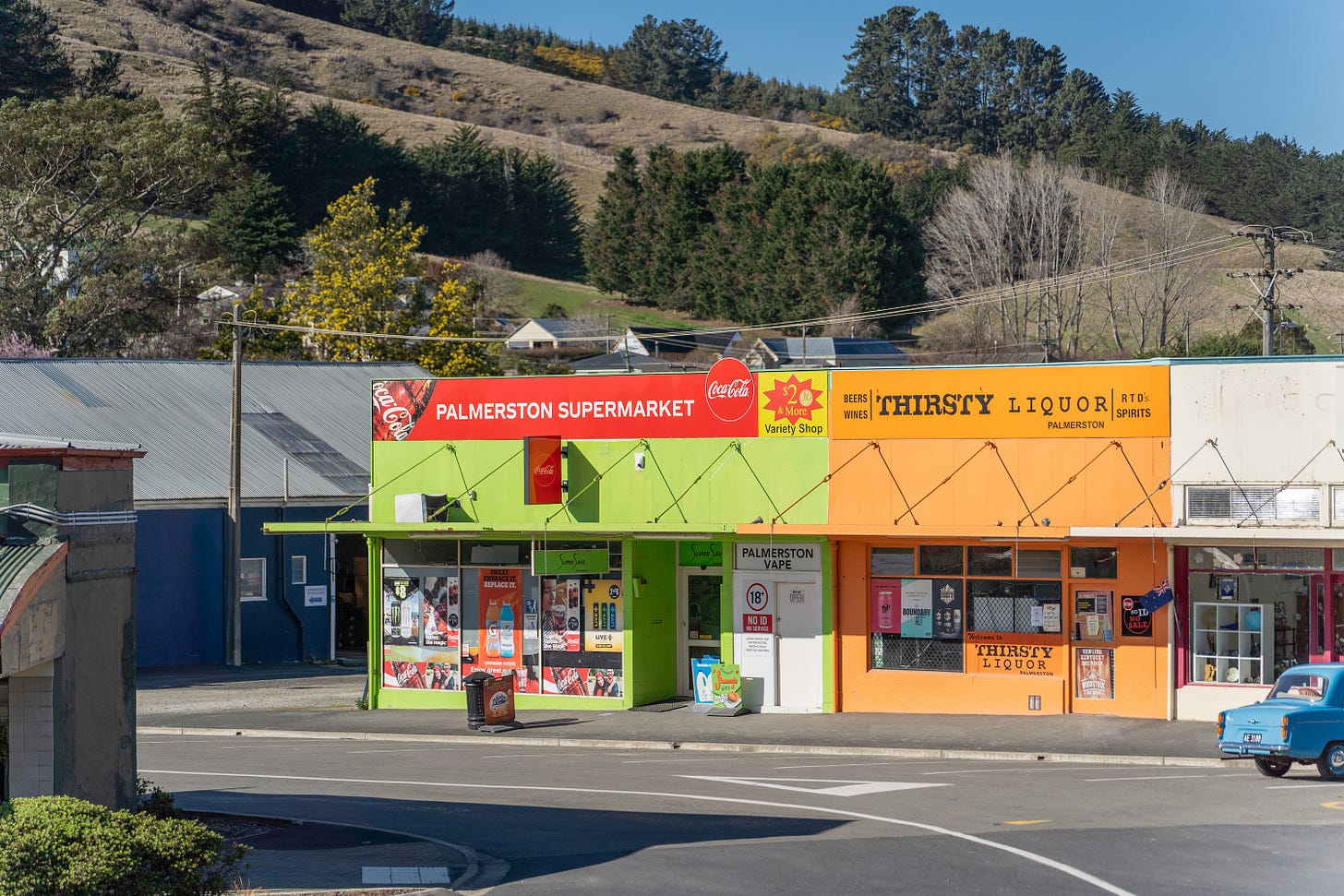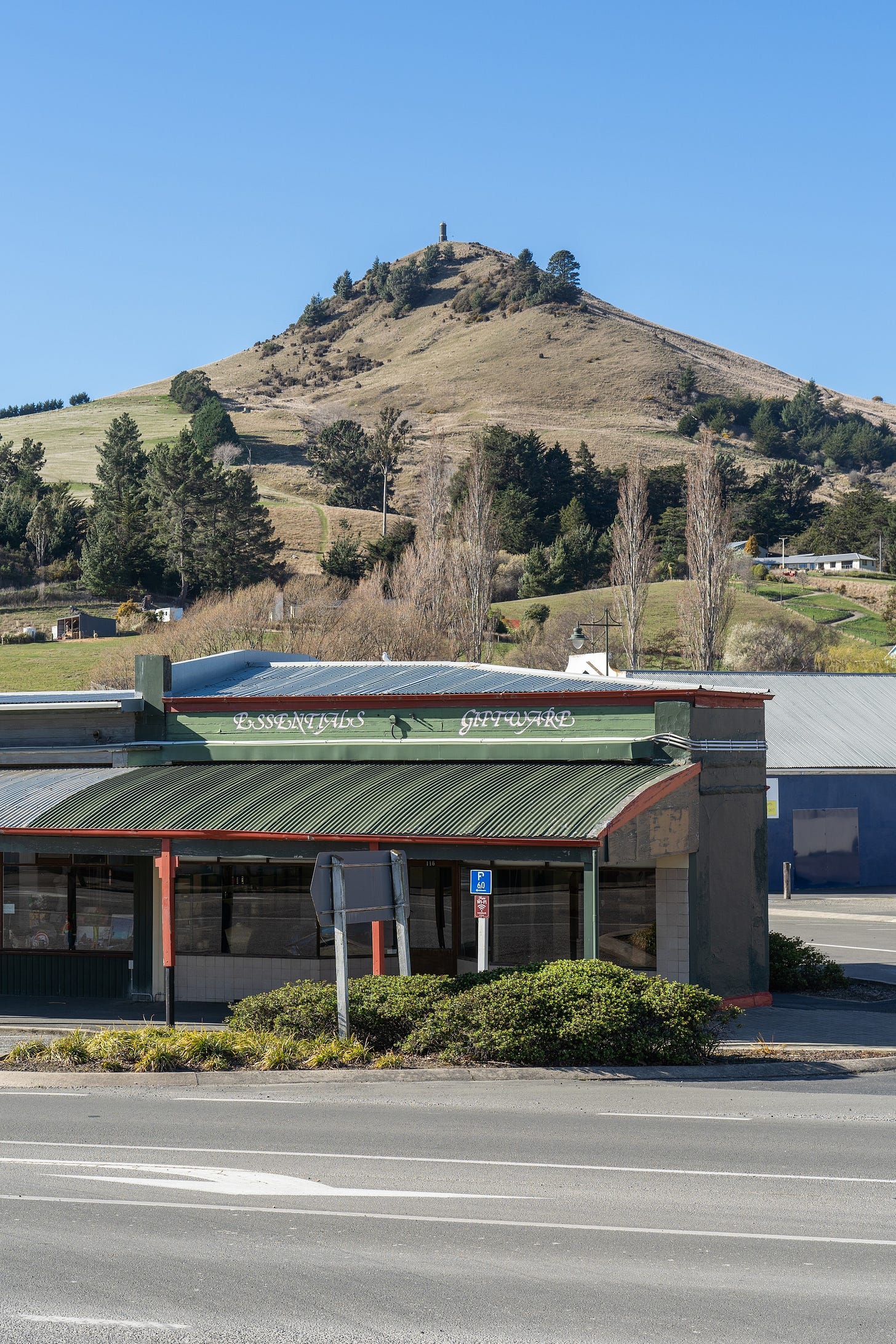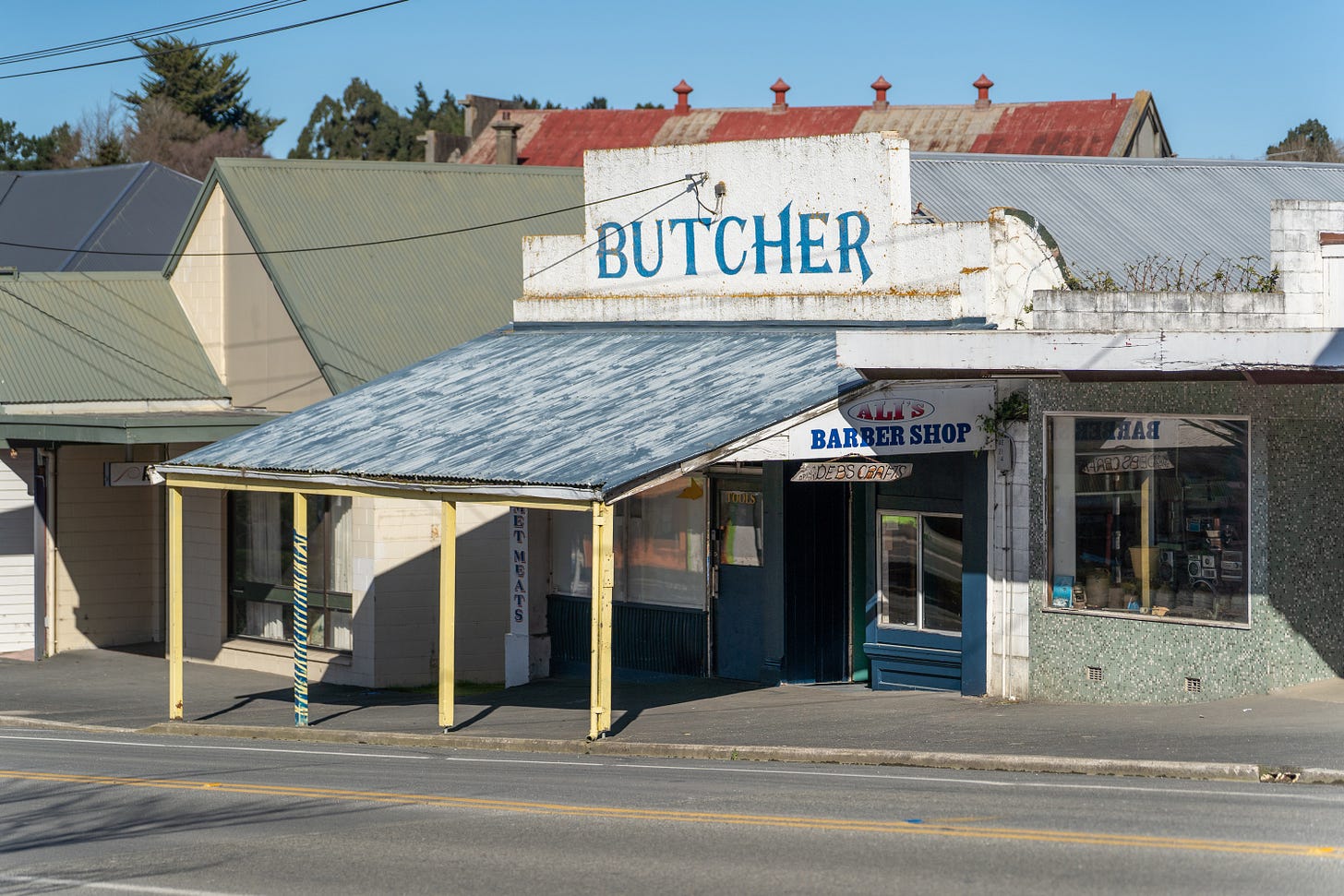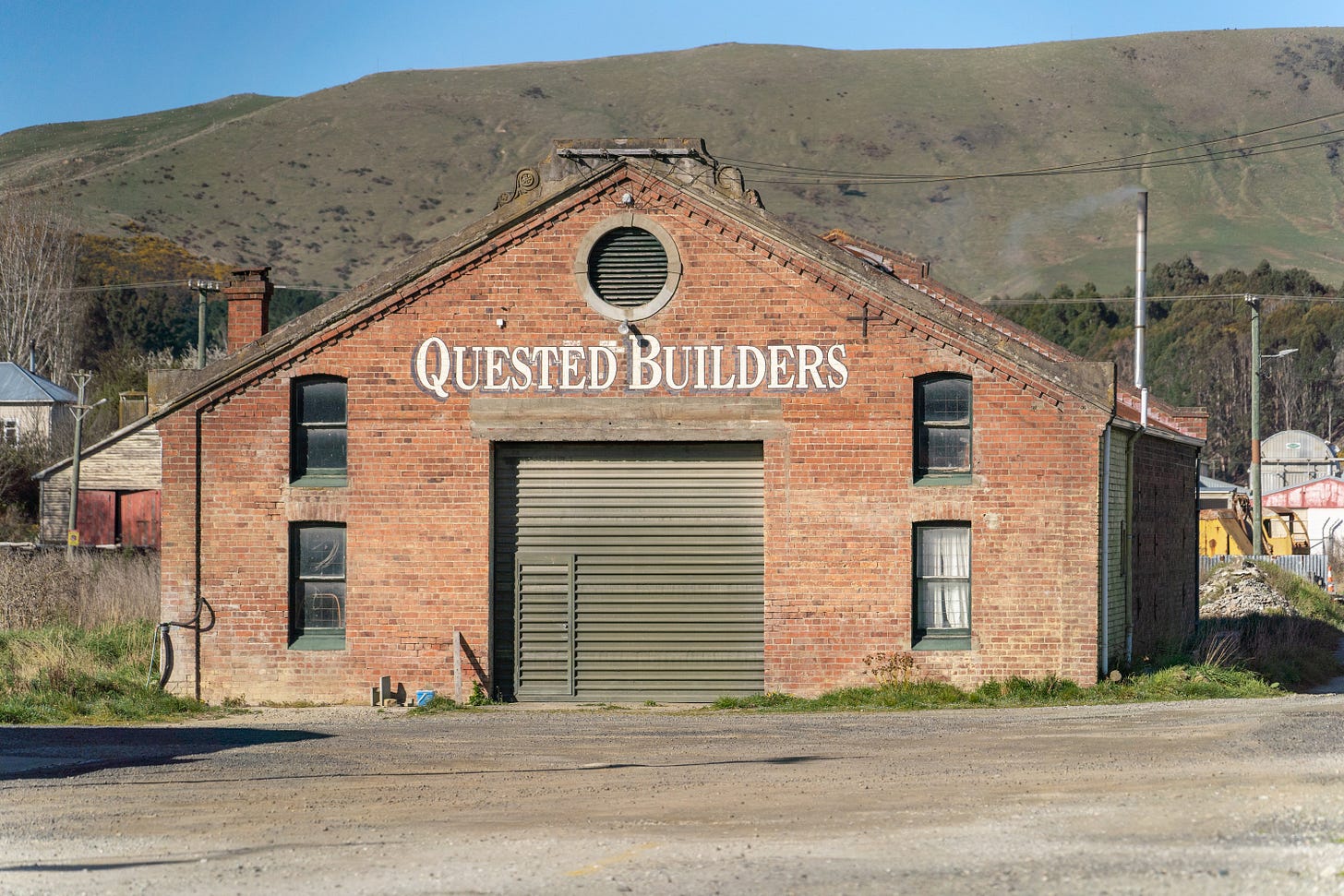Palmerston (population just under 1,000) is one of those small New Zealand towns on State Highway 1 that you drive through on your way to somewhere else. It’s situated at a major road junction. From here, it’s 50 km south to Dunedin, 58 km north to Oamaru, and about 90 km inland to Naseby, driving northwest on State Highway 85 (locally known as “The Pigroot”). The Main South Line railway passes through the town and used to connect to a branch line that ran inland, which was discontinued in 1989.
Between Palmerston and the Pacific coast, 5 km to the east, stands Puketapu (Māori for “sacred hill”), a lone hill topped with a memorial cairn to Sir John McKenzie, a 19th-century Otago politician (photo 78b). A race to the top from the railway station is held every October to commemorate Albert Kelly, a Palmerston police constable who ran up Puketapu every day during World War II to see if enemy ships were approaching. This prominent hill and cairn serve as a visible landmark that can be seen from a distance as you approach Palmerston. A walk to the top is rewarded with panoramic views of the surrounding area.
Today, Palmerston serves as a service hub for the region’s agricultural community. It is also known for trout fishing in the nearby Shag River, as well as a coastline with scenic beaches and wildlife including seals and penguins. A walk through the quiet streets of Palmerston provides glimpses into the recent past of this small junction town and raises questions about the future of small towns in New Zealand, as changes in transportation, industries, agricultural practices, and demographics continue.





What’s next?
I’ve been going through the archives and will share some images closer to home next.
What do you think?
I invite you to leave a comment below.




Lovely. My only comment is that I would have gone to the right in my framing just enough to get the whole car, it is like I am missing something! But a lovely shot regardless.
Some cool old buildings there, but I found your composition a bit static and uninteresting this time. For example, all the main subjects were center frame. I like to try some more unusual framing to get a greater level of interest. Don't take this as a harsh criticism; it's just an observation of a fellow photographer.